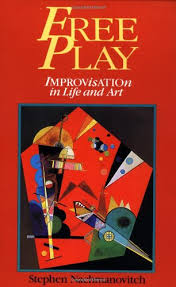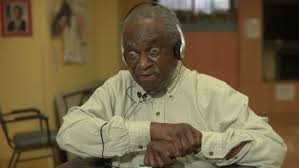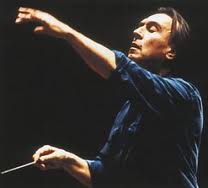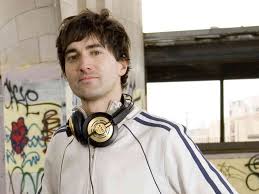 What is the source of a creative idea? What is the link between art and spirituality? How can we unlock our inner muse, find joy in the creative process and unleash the full potential of our imagination? Stephen Nachmanovitch’s book, Free Play: The Power of Improvisation in Life and the Arts delves into these questions. Nachmanovitch is an improvisational violinist and violist, computer artist and teacher. Musicians and non-musicians alike will find his book meaningful, inspiring and thought provoking.
What is the source of a creative idea? What is the link between art and spirituality? How can we unlock our inner muse, find joy in the creative process and unleash the full potential of our imagination? Stephen Nachmanovitch’s book, Free Play: The Power of Improvisation in Life and the Arts delves into these questions. Nachmanovitch is an improvisational violinist and violist, computer artist and teacher. Musicians and non-musicians alike will find his book meaningful, inspiring and thought provoking.
Nachmanovitch stresses that improvisation is not chaotic, but flows from a natural formal structure:
[quote]We carry around the rules inherent in our organism. As living, patterned beings, we are incapable of producing anything random. We cannot even program a computer to produce random numbers; the most we can do is create a pattern so complex that we get an illusion of randomness. Our body-mind is a highly organized and structured affair, interconnected as only a natural organism can be that has evolved over hundreds of millions of years. An improviser does not operate from a formless vacuum, but from three billion years of organic evolution; all that we were is encoded somewhere in us.[/quote]
Nachmanovitch also highlights the common threads which run through music, dance, visual art, literature and religious traditions. He shows that life and art are inseparable. Michelangelo believed that the statue already existed and that his job was simply to carve away the excess stone. Nachmanovitch suggests that:
[quote]As stone is to a sculptor, so time is to a musician. Whenever he gets up to play, the musician stands there facing his own unsculpted block of time.[/quote]
Nachmanovitch stresses the ephemeral aspect of improvisation and the spontaneous creative impulse:
[quote]The fact that improvisation vanishes makes us appreciate that every moment of life is unique-a kiss, a sunset, a dance, a joke. None will ever recur in quite the same way. Each happens only once in the history of the universe.[/quote]
To learn more about Nachmanovitch and his work, visit his website, listen to this podcast and watch this short interview:
[quote]If you forget yourself , you become the universe.[/quote]
-Hakuin Ekaku
[button link=”http://www.amazon.com/Free-Play-Improvisation-Life-Art/dp/0874776317″]Find on Amazon[/button]

 Four-time Grammy Award winning opera singer Renee Fleming will be
Four-time Grammy Award winning opera singer Renee Fleming will be  Relaxation is the key to all technique. Often when we’re on the spot trying to perform our best, the natural tendency is to tense up. The “fight or flight” instinct is activated. In violin playing, tension blocks the natural springy weight of the bow arm, leading to smaller tone and reduced control. Tension in the left hand causes fingers to push into the fingerboard and then lift too high, leading to loss of speed, accuracy and efficiency. There is also the danger of playing-related injury.
Relaxation is the key to all technique. Often when we’re on the spot trying to perform our best, the natural tendency is to tense up. The “fight or flight” instinct is activated. In violin playing, tension blocks the natural springy weight of the bow arm, leading to smaller tone and reduced control. Tension in the left hand causes fingers to push into the fingerboard and then lift too high, leading to loss of speed, accuracy and efficiency. There is also the danger of playing-related injury.
 The greatest composers serve as visionaries and prophets, giving us a glimpse at a higher reality. Looking back through music history, many composers seem to have experienced a sharpening of this sense of vision in the final years of life. The Ninth and final symphonies of Mahler and Bruckner are filled with mystery, foreboding and spirituality. The first movement of Bruckner’s Ninth is marked “Feierlich“ (Solemn) and ” misterioso.” Schubert’s Ninth Symphony, “The Great”, is a sublime Romantic statement which, in scale, eclipses all of his previous classical symphonies. In his book, Free Play: The Power of Improvisation in Life and the Arts, Stephen Nachmanovitch writes about late Mozart:
The greatest composers serve as visionaries and prophets, giving us a glimpse at a higher reality. Looking back through music history, many composers seem to have experienced a sharpening of this sense of vision in the final years of life. The Ninth and final symphonies of Mahler and Bruckner are filled with mystery, foreboding and spirituality. The first movement of Bruckner’s Ninth is marked “Feierlich“ (Solemn) and ” misterioso.” Schubert’s Ninth Symphony, “The Great”, is a sublime Romantic statement which, in scale, eclipses all of his previous classical symphonies. In his book, Free Play: The Power of Improvisation in Life and the Arts, Stephen Nachmanovitch writes about late Mozart: Renowned Italian conductor Claudio Abbado passed away yesterday at the age of 80. You can read about his life
Renowned Italian conductor Claudio Abbado passed away yesterday at the age of 80. You can read about his life 